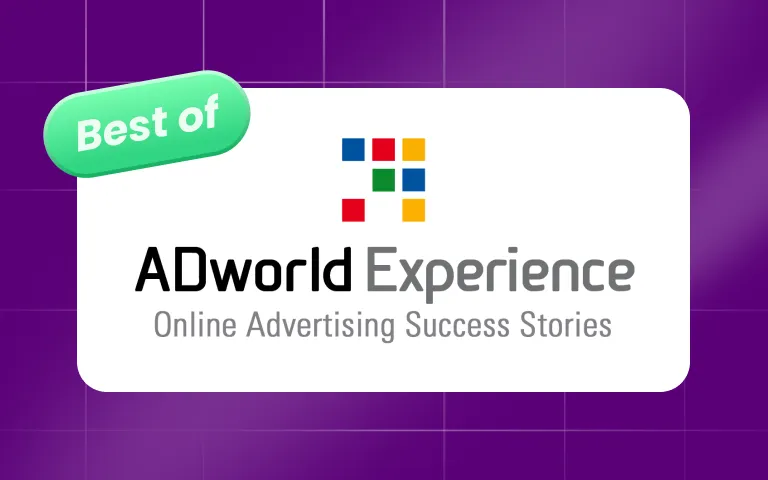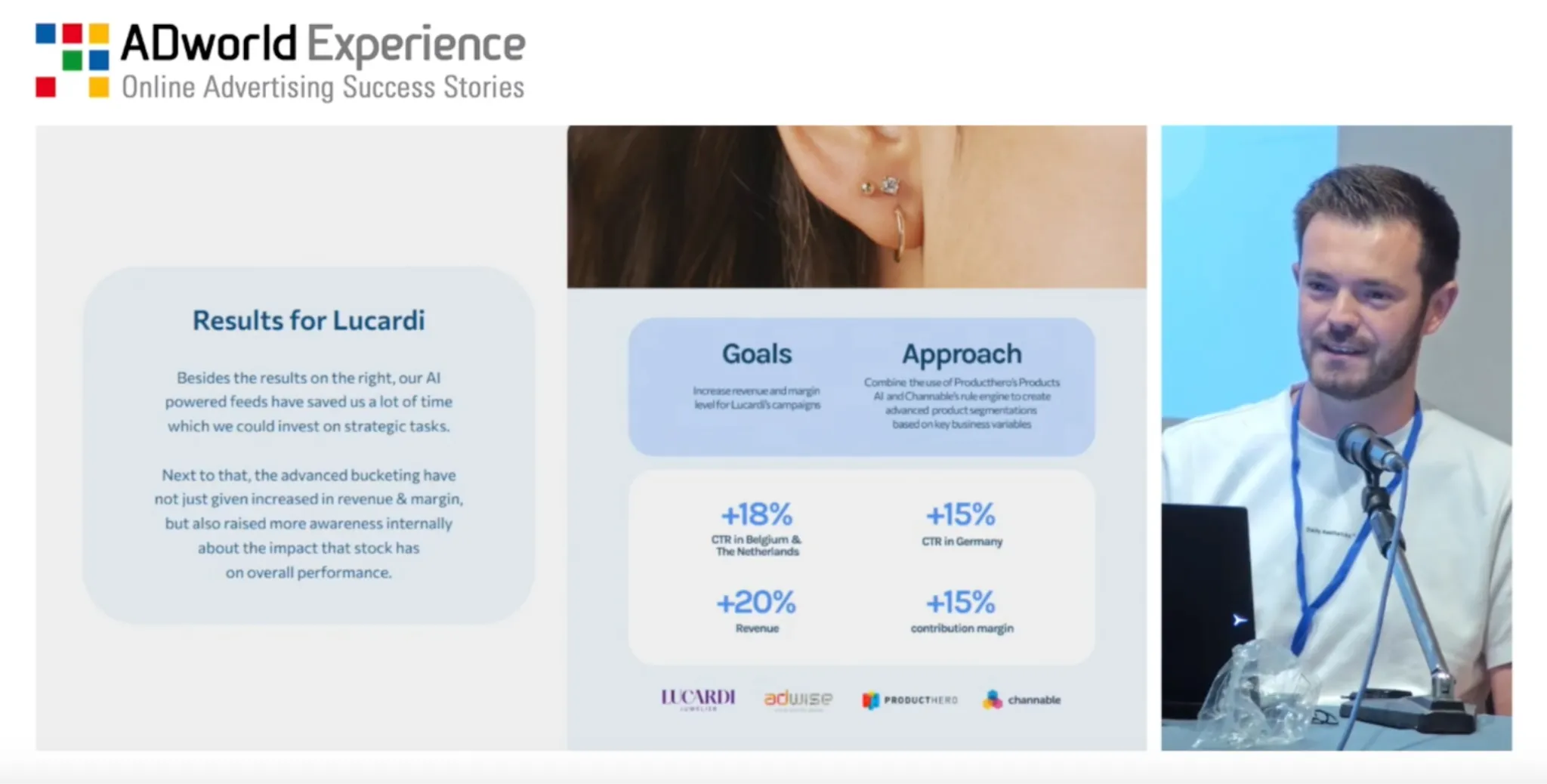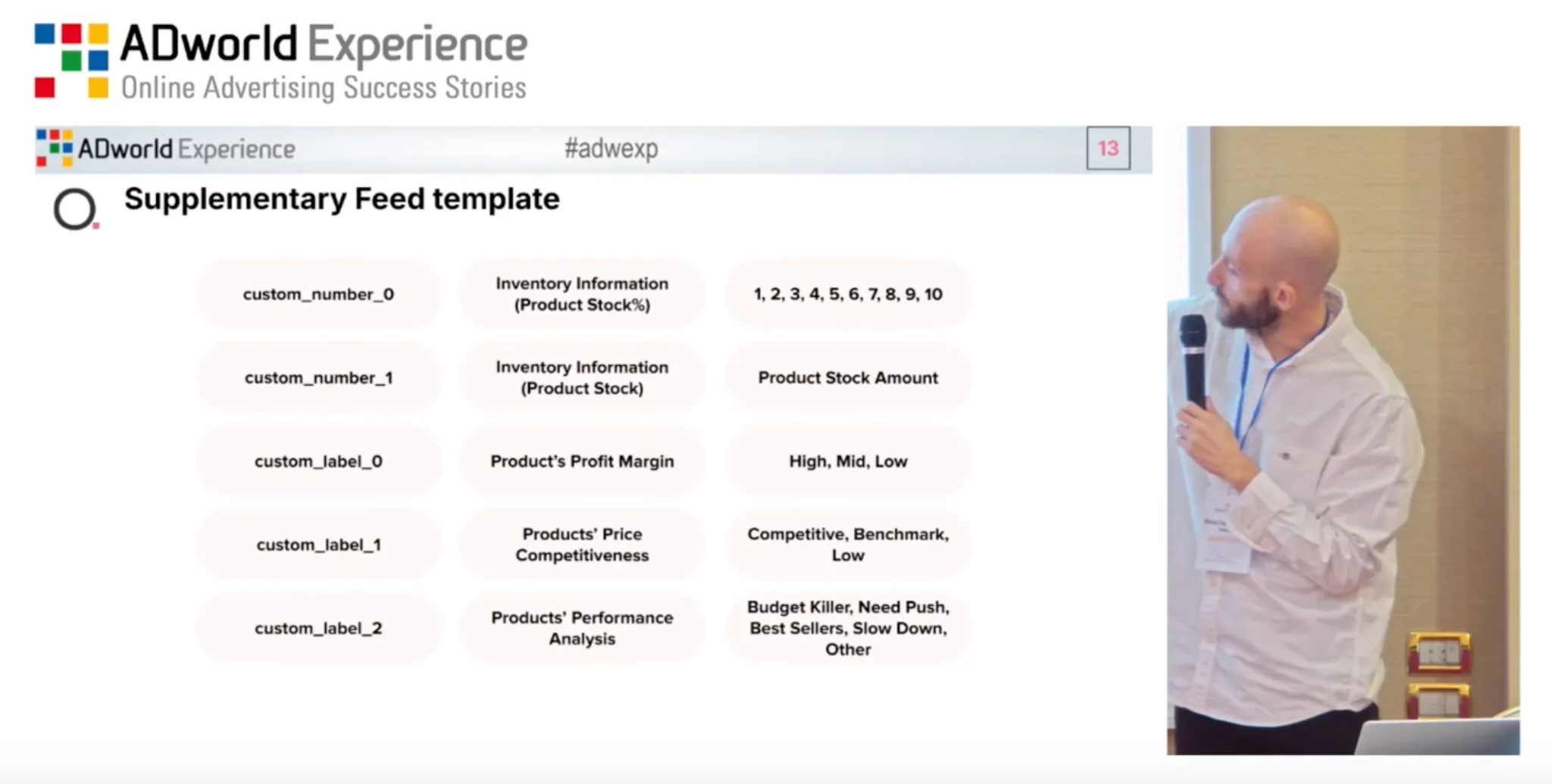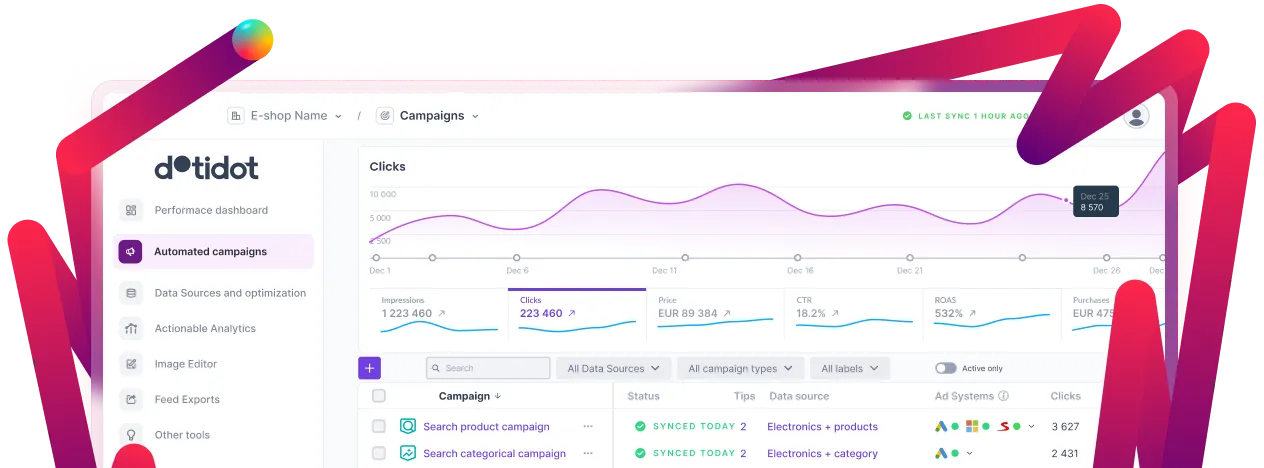Book a call with us







We were especially proud to see our CCO, Roman Šedivý, take the stage in Bologna with his own session. Speaking on the main stage of Europe’s biggest PPC event, Roman explored how to scale e-commerce across markets with precision and efficiency. While he was presenting, our two Automation Experts, Martin and Tom, were attending other sessions that inspired them and sparked new ideas.
By Dennis Westerbeek (Adwise) and Donna Frederiks (ProductHero)

Tom: The key takeaway from this session was the importance of testing different PMax strategies and moving from a simple “hero” approach toward a margin-based strategy, combined with thorough feed optimization including AI-driven translations for scaling to new markets. At Dotidot, we’re already able to segment products in a similar way (based on performance, margin, or stock levels) as long as we have access to the necessary margin and system data. It’s been really inspiring to watch.
Martin: The session perfectly highlighted that optional feed attributes play a crucial role in Shopping and PMax performance, and that success comes from combining multiple data sources — using ProfitMetrics for margin and revenue tracking, Feed management platform for merging stock, margin, and product info, and AI for title optimization and price comparison insights. They also stressed avoiding wasted spend where products aren’t price-competitive, and segmenting items into heroes, sidekicks, villains, and zombies via automated scripts updated weekly. The team monitors performance by bucket and reported 15–18% higher CTR and around +20% revenue growth after feed optimization.
TIP: Try testing these product buckets in Dotidot yourself to achieve great results. Read our Performance Max Automation series for more insights.
By Kirk Williams (ZATO)

Martin: This session was a great reminder that search is about capturing demand efficiently, not scaling a business on its own. It opened a more philosophical perspective on the balance between demand creation and demand capture, showing that PPC can only go as far as the market’s existing interest allows. I really liked the point about recognizing the breaking point for CPA, where pushing harder in search stops being efficient. To truly grow, search needs support from other channels that generate demand, because without top-of-funnel activity even the smartest optimization or bidding strategy will eventually hit its ceiling.

Tom: What resonated with me was how they combined stock levels, profit data, and price competitiveness from Merchant Center with product performance metrics from GA4. They analyzed products within their categories, comparing each item to the median of its group using metrics like cart-to-detail and buy-to-detail. Based on this, they built their own label system including Budget Killers, Best Sellers, Slow Down, and Need to Push, and used these labels to shape campaign and ad set structures, even in Meta.
Their use of BigQuery and Python to calculate medians is quite advanced and we would likely rely on averages instead, yet the principle of blending profitability, competitiveness, and engagement metrics into campaign design is definitely something we want to explore further.
Events like ADworld Experience keep us curious and push us to rethink how we do performance marketing every day. The biggest takeaway? Real growth comes from understanding business data, not only platform metrics. Our team is already exploring how to turn these insights into practical improvements for our clients.
